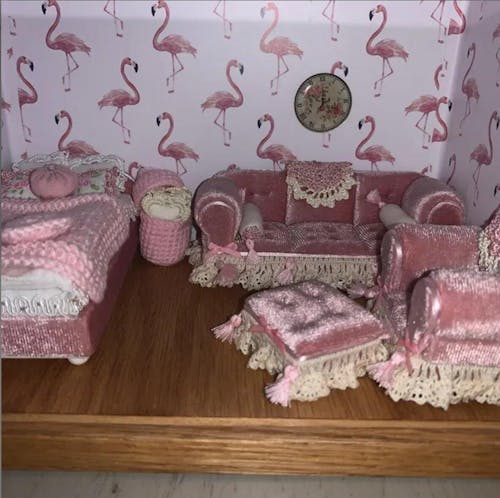Peel and stick wallpaper is a quick and stylish way to transform any space without the mess of traditional paste. But what if your wallpaper keeps falling off or just won't stick? You’re not alone — this is a common issue many DIYers face. In this guide, we’ll explain why peel and stick wallpaper is not sticking, how to fix it, and what you can do to prevent it from peeling in the future.
Why Is My Peel and Stick Wallpaper Falling Off?
There are several reasons why peel and stick wallpaper may come off after application — and most of them are easy to fix.
1. Poor Surface Preparation
This is the number one reason peel and stick wallpaper doesn't stick properly.
- Clean: Dust, grease, or even minor debris can prevent adhesion. Use a mild soap solution and let the surface dry completely.
- Dry: Never apply wallpaper on damp walls. Moisture weakens the adhesive.
- Smooth: Textured or uneven walls are the enemy of peel and stick wallpaper. Sand or skim coat if needed.
- Primed (Optional but Effective): A coat of wallpaper primer improves adhesion dramatically.
💡 Wallpaper not sticking to wall? It's almost always due to prep issues.
2. Wrong Wall Texture
Peel and stick wallpaper works best on flat, non-porous surfaces. Avoid applying on:
- Textured or bumpy walls
- Brick or concrete
- High-gloss or chalky paints
If you must apply it on a rough surface, use a liner paper or add extra adhesive.
3. Temperature and Humidity Problems
Extreme environmental conditions can cause peel and stick wallpaper to come off:
Cold Rooms: Adhesive doesn't activate well under 50°F (10°C)
High Humidity: Bathrooms, laundry rooms, and kitchens can cause peeling
Temperature Fluctuations: Rapid changes cause expansion and contraction
Tip: Let the wallpaper acclimate to room temperature for at least 24 hours before applying.
4. Poor Application Technique
Even high-quality wallpaper won’t stick well if applied incorrectly. Common mistakes:
- Not using a smoothing tool
- Rushing the process
- Not pressing firmly enough
How to apply it properly:
- Start from the top, working down
- Use a smoothing tool or soft cloth to remove bubbles
- Press edges and seams firmly
5. Low-Quality Wallpaper
Unfortunately, not all peel and stick wallpapers are created equal. Cheaper products often have weak adhesive or thin material that won’t hold up over time.
Recommendation: Choose trusted brands like CostaCover for better sticking power and durability.
How to Make Peel and Stick Wallpaper Stick Better
Try these expert tips to improve adhesion and keep your wallpaper from falling off again:
1. Use a Primer. Even if your wall looks clean, primer creates a better bonding surface.
2. Apply Additional Adhesive. You can reinforce problem areas (like corners or seams) with:
-
Wallpaper glue pens
-
Clear double-sided tape
-
Spray adhesive (for long-term hold)
3. Seal the Edges. Use clear silicone caulk or a bit of wallpaper glue along edges to prevent lifting.
4. Use a Heat Source. Use a hair dryer on low heat to gently warm the adhesive before reapplying — this can help reactivate the glue.
Quick Fixes for Wallpaper Coming Off
Peel and stick wallpaper coming off? Try these solutions right now:
| Problem | Quick Fix |
|---|---|
| Loose corner | Add glue pen or double-sided tape |
| Bubbling | Use a smoothing tool and needle to pop the bubble |
| Peeling seam | Heat with hair dryer and press with cloth |
| Falling strip | Remove and reapply with added adhesive |
FAQs
Does Peel and Stick Wallpaper Come Off Easily?
Yes, if applied correctly, peel and stick wallpaper can be removed cleanly without damaging your walls. However, if the wall wasn't primed or was textured, removal may pull some paint.
How to Keep Peel and Stick Wallpaper From Coming Off?
- Prep your walls properly
- Avoid high-humidity rooms
- Use high-quality wallpaper
- Seal the edges
- Check periodically for lifting
Why Is Peel and Stick Wallpaper Not Sticking?
Usually because of dirty, textured, or moist walls — or poor technique. Cheap wallpaper can also be the culprit.
Can I Use Peel and Stick Wallpaper in a Bathroom?
Yes, but choose moisture-resistant wallpaper and ensure the surface is very clean and dry. Consider sealing edges with clear caulk.
Checklist: Prep and Apply Like a Pro
| Step | Action | Why It Matters |
|---|---|---|
| 1 | Clean wall with soap & water | Adhesive sticks better |
| 2 | Let it dry 24 hours | Avoid moisture interference |
| 3 | Sand rough spots | Creates smooth surface |
| 4 | Apply primer (optional) | Boosts adhesive grip |
| 5 | Use smoothing tool during install | Removes bubbles & improves hold |
| 6 | Seal edges with glue/caulk | Prevents peeling |
Final Thoughts
Peel and stick wallpaper is a game-changer — if applied correctly. Now that you know why your peel and stick wallpaper might be falling off and how to fix it, you’re set up for success.
➡️ Want more tips? Read our full guide on how to install peel and stick wallpaper.


















